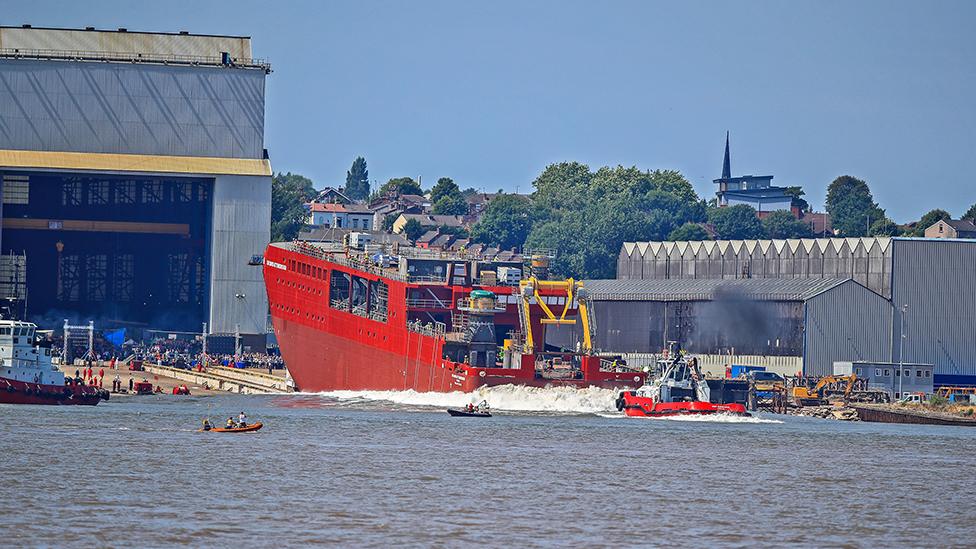Sir David Attenborough polar ship makes its London debut
- Published
The BBC’s Rebecca Morelle takes a tour of RRS Sir David Attenborough
The UK's new polar research ship, the RRS Sir David Attenborough, has completed basic sea trials and is ready to undertake its first expedition.
The vessel came up the Thames on Wednesday through the Woolwich Barrier and is now tied up in Greenwich.
It is spending a few days at the home of the Prime Meridian to enable the public to see it, but also to mark the start of the COP26 climate conference.
World governments meet in the Scottish city of Glasgow from Sunday.
The Attenborough, named after the TV naturalist and BBC presenter Sir David, is the ship the public wanted to call "Boaty McBoatface" in an online poll but were overruled by ministers.
Sir David: "The findings made on this ship will be of the greatest value and importance"
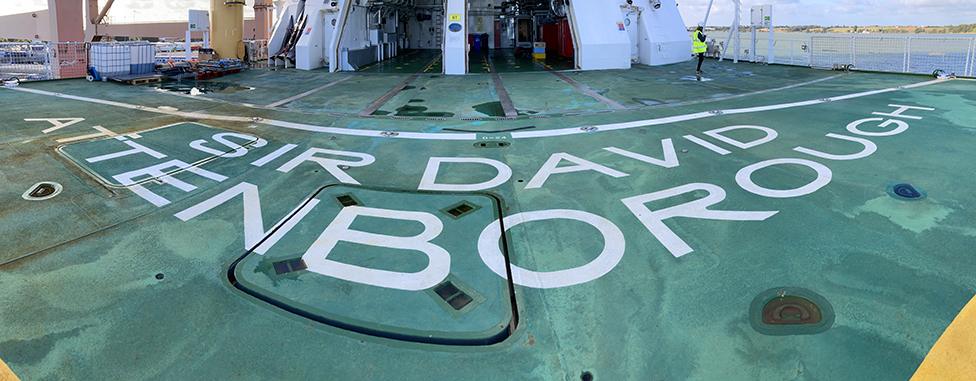
International senior scientific advisers are using the Attenborough as a platform to issue a statement about the urgent need to address the climate crisis.
They want to see a concerted drive to develop - and use - the technologies that will keep global temperature rise to1.5C and underpin the net zero economies of tomorrow.
These technologies include better ways of creating, storing and using low-emissions energy - including improving semiconductors, batteries and low-emitting fuel production - as well as work on heating and cooling, and carbon capture and storage.
"I think the first thing to say is sticking to 1.5 is both important and achievable," Sir Patrick Vallance, the UK government's chief scientific adviser, told BBC News.
"But it's only achievable if we get urgent action. If you work back, for example, from 2050, and ask what you need to do, you can't rely on something coming along late in the day and saving us. It's about utilising the technologies we have now, getting them in place as soon as we can at scale. And that in itself requires R&D (research and development), and making sure that we use both technology, and, of course, natural actions, and the behavioural changes that we all need to take."
Sir Patrick Vallance: "If we stick to 1.5C, we will limit the consequences"
Fly alongside the Sir David Attenborough polar ship
The 129m-long Attenborough has spent the past year in shake-down trials around the British coast.
Its first ocean voyage will go to Antarctica for the new austral summer research season.
The vessel must deliver supplies to the UK's main scientific base, at Rothera, on the continent's peninsula, as well as to other minor stations dotted around the Southern Ocean.
It is expected to head south on or around 18 November.
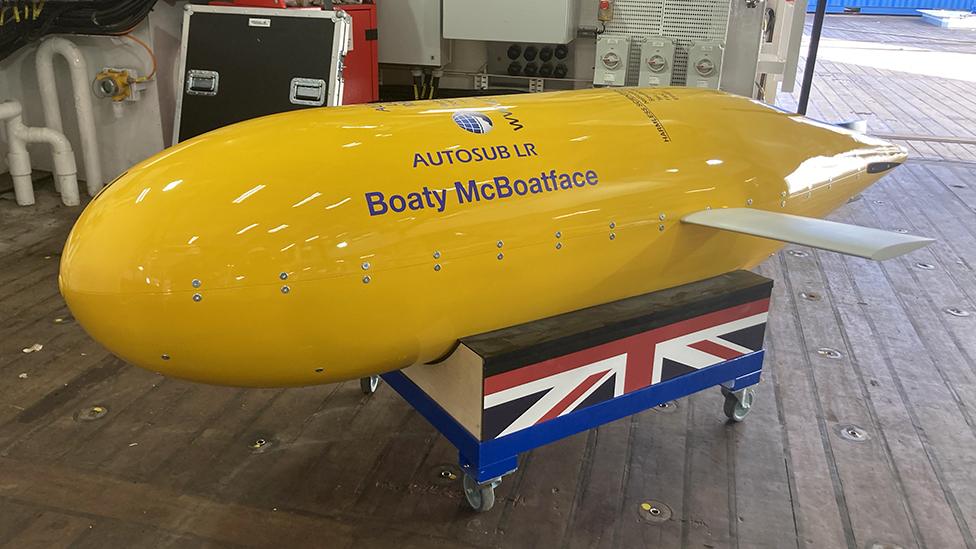
The ship isn't named "Boaty McBoatface", but some of its robotic subs do carry the moniker
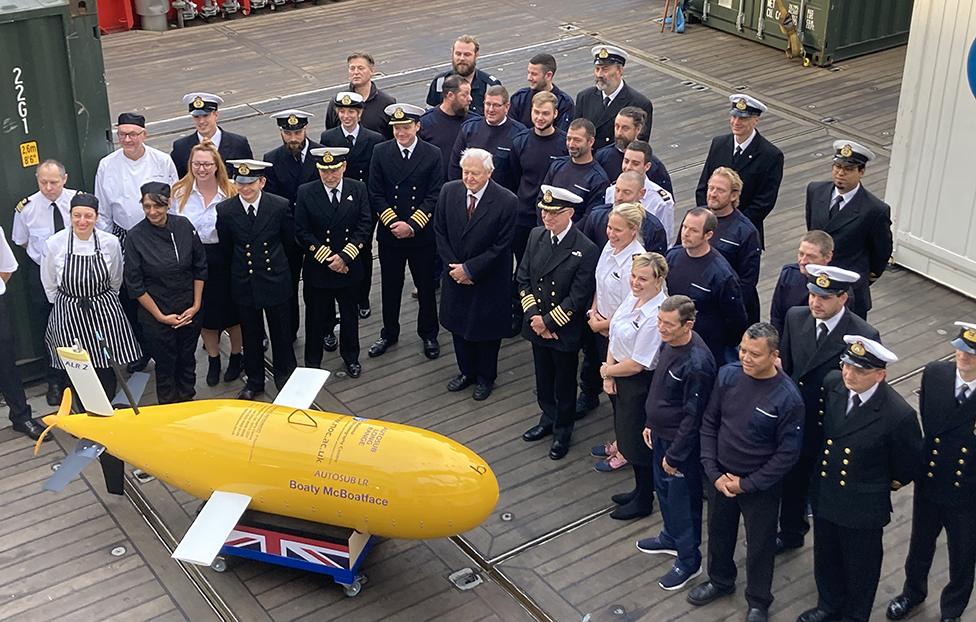
Sir David has his photo taken with the ship's crew. They head south around 18 November
Engineers will want to check its performance in sea-ice, something they haven't had the chance to do.
The Attenborough is what's termed a Polar Class 4 icebreaker, which means it should have the strength to crash through metre-thick floes at a steady pace and without damage to its hull.
The £200m ship is state of the art. It has a helipad (helicopters are essential for exploration and safety), cranes and onboard labs, and it has an enhanced ability to deploy subs and other ocean-survey and sampling equipment.

A "moon pool" allows instruments to be lowered through the hull into the ocean water below
The Attenborough was the product of lessons learned after decades of operations in the frozen south and north, said Dr Rob Larter.
"The way science has progressed means you now have to be able to handle much bigger gear. So, that's why this ship has these very big cranes and gantries," the British Antarctic Survey (BAS) marine geophysicist told BBC News.
"You also need to be very flexible, because there's so many different sorts of science that people want to do now. We have laboratories that come in containers, like for example a radioisotope lab, an ultra-clean chemistry lab and an experimental aquarium. These can all be added to the ship."
The Attenborough will be at the forefront of understanding how Earth's atmosphere and oceans are warming, and the impacts the temperature rise will have, in particular, on the ice-covered waters and lands of the Arctic and Antarctic.
Sir David was present on Thursday to inspect his namesake.
His hope, he said, was that world leaders meeting at COP26 would listen to the science and take action to curb global warming.
"I am indeed a very proud man to be standing in this remarkable vessel, to be associated in any way with best, the British Antarctic Survey," he told his audience.
"May I wish this ship and all who sail in her, and all the scientists who research on board, bon voyage on her forthcoming voyage to the Antarctic. I know that the findings made on this ship in the next few years will be of the greatest value and importance to the welfare of the world. Let us listen to the science."
Sir David has recorded the safety announcements to be played over loudspeaker
BAS scientists have already established, for example, how the Southern Ocean, which surrounds Antarctica, actually helps to shield us from the worst effects of global heating.
Oceanographer Dr Emma Boland explained: "The Southern Ocean takes up about 40% of the carbon dioxide that the oceans as a whole take up, even though it only accounts for 20% of the total ocean surface area. So, it's doing double the work.
"And if that CO2 didn't get taken up by the ocean, it'd be in the atmosphere, and global warming at the surface as we experience it, as human beings, would be that much worse."

The COP26 global climate summit in Glasgow in November is seen as crucial if climate change is to be brought under control. Almost 200 countries are being asked for their plans to cut emissions, and it could lead to major changes to our everyday lives.

Scientists have even calculated a value for this "service" provided by the Southern Ocean: £60bn per year (€72bn/yr). In other words, if the Southern Ocean didn't exist, this is how much it would cost to remove the CO2 from the atmosphere in a different way.
The new Royal Research Ship is tied up to a pontoon in the Thames a short distance from the famous 19th-Century tea clipper, the Cutty Sark.
The public won't be able to board the Attenborough, but they will be able to visit an associated exhibition hosted by the Royal Museums Greenwich called "Ice Worlds". This will showcase live virtual tours of the polar ship on a big screen, alongside a range of interactive stands.
- Published21 October 2020
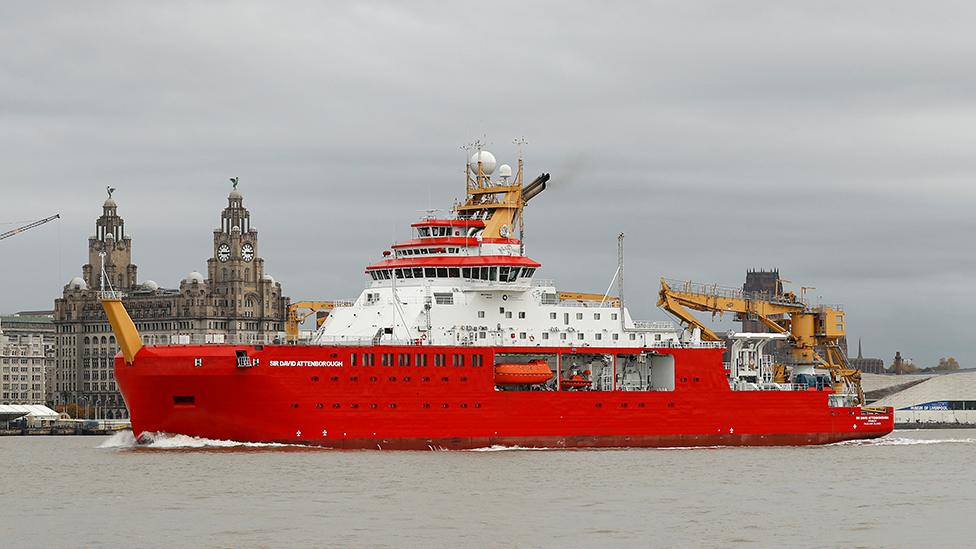
- Published26 September 2019
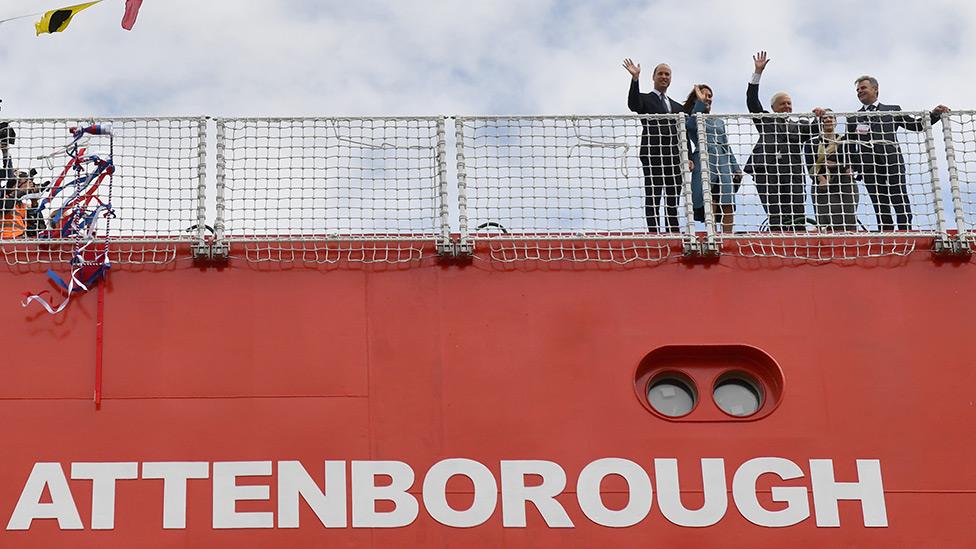
- Published14 July 2018
